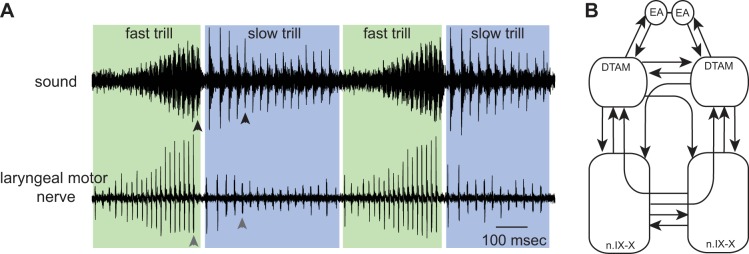Fig. 1.
Advertisement calls generated by male Xenopus laevis. A: simultaneous recordings of the sound (top) and the laryngeal nerve activity (bottom) while advertisement calls are produced by an awake male X. laevis. Fast trills are enveloped in green; slow trills in blue. A sound pulse (black arrowheads; top) is always preceded by a compound action potential (gray arrowheads; bottom). B: diagram of the key vocal nuclei of male X. laevis. Within a brain stem, a pair of dorsal tegmental area of medulla (DTAM) and a pair of laryngeal motor nuclei [a homologue of nucleus ambiguus (n.IX-X)] are contained. These nuclei are reciprocally connected with each other by projection neurons (arrows). DTAMs, in turn, are reciprocally connected with the extended amygdala (EA). A pair of EA is reciprocally connected, but the coupling is shown as a line in the diagram, since we did not explore the function of bilateral coupling of EA in this study.

